A disclaimer is a text addendum in an email that informs the recipient about certain circumstances about the processing of the email.
Disclaimer use cases
Disclaimers may be set for the following cases in Email Gateway Security:
- For email email that was processed by a specific security rule. Configure under Security Rules /rule/ General / Rule disclaimer.
- For an email that was allowed (e.g. no infection or sensitive data was found) under Security Rules /rule/ Scan / Allowed actions.
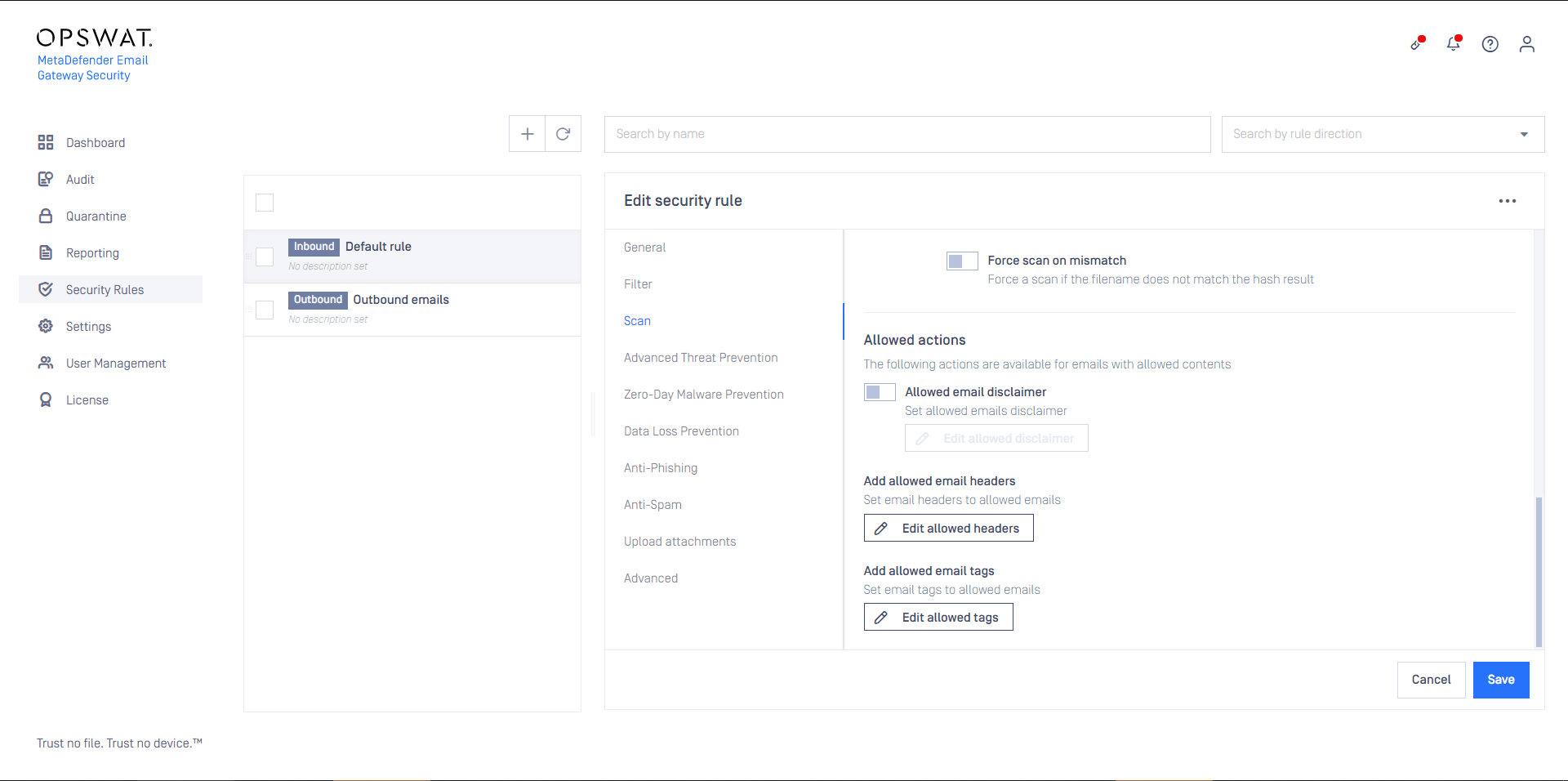
- For an email that was blocked (e.g. infected or sensitive data found) but delivered cause Security Rules /rule/ Advanced Threat Prevention / Handling of the email is set either to Delete blocked content or Deliver blocked contents. Set the disclaimer for these cases under Security Rules /rule/ Advanced Threat Prevention / Blocked actions.

- For an email that was blocked due to password protected attachments but was delivered cause Security Rules /rule/ Advanced Threat Prevention / Handling of the email is set either to Delete blocked content or Deliver blocked contents. Set the disclaimer for this case under Security Rules /rule/ Advanced Threat Prevention / Encrypted attachments.
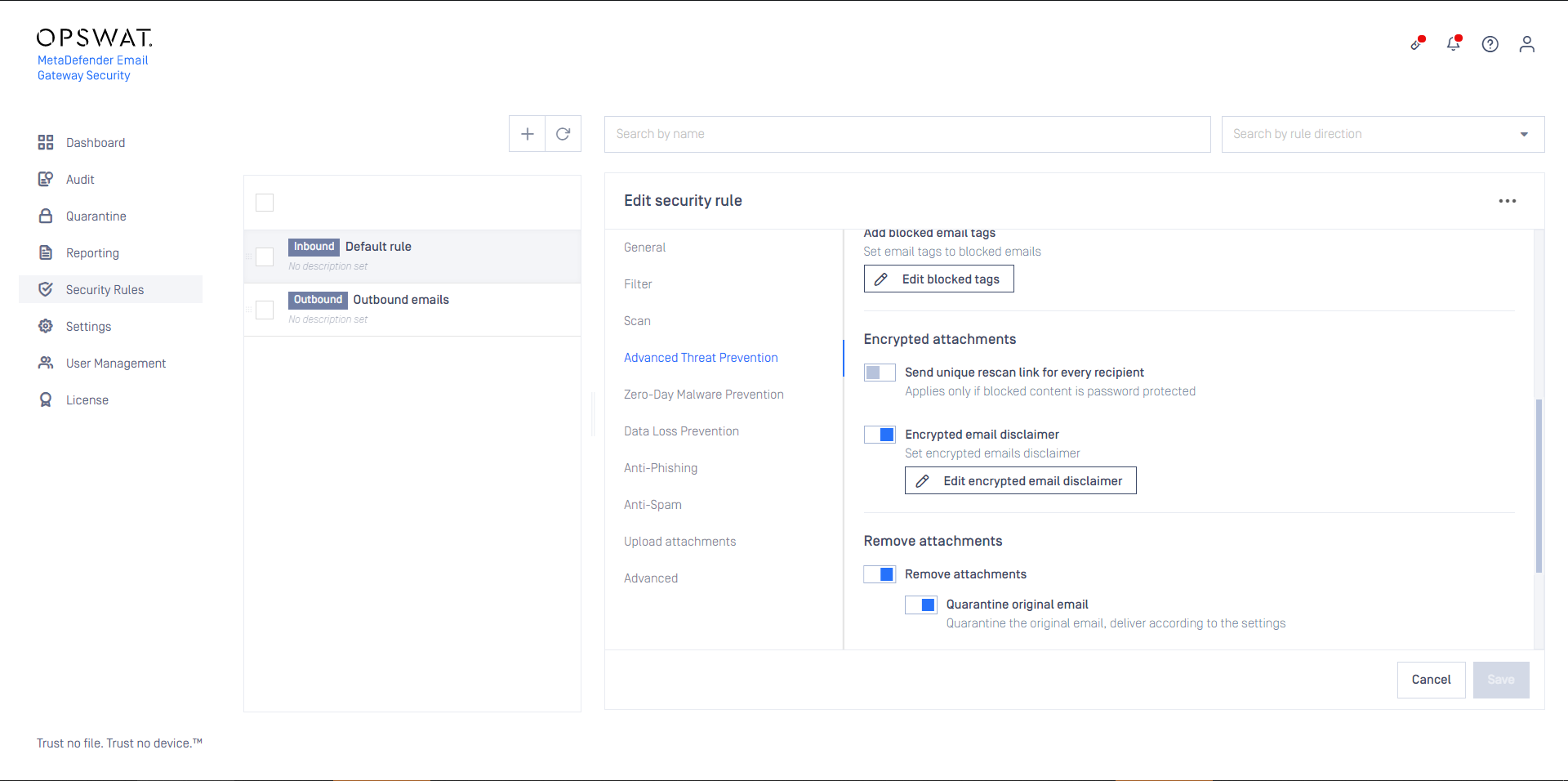
- For an email that was disarmed and reconstructed under Security Rules /rule/ Zero-Day Malware Prevention / Zero-Day Malware Prevention.
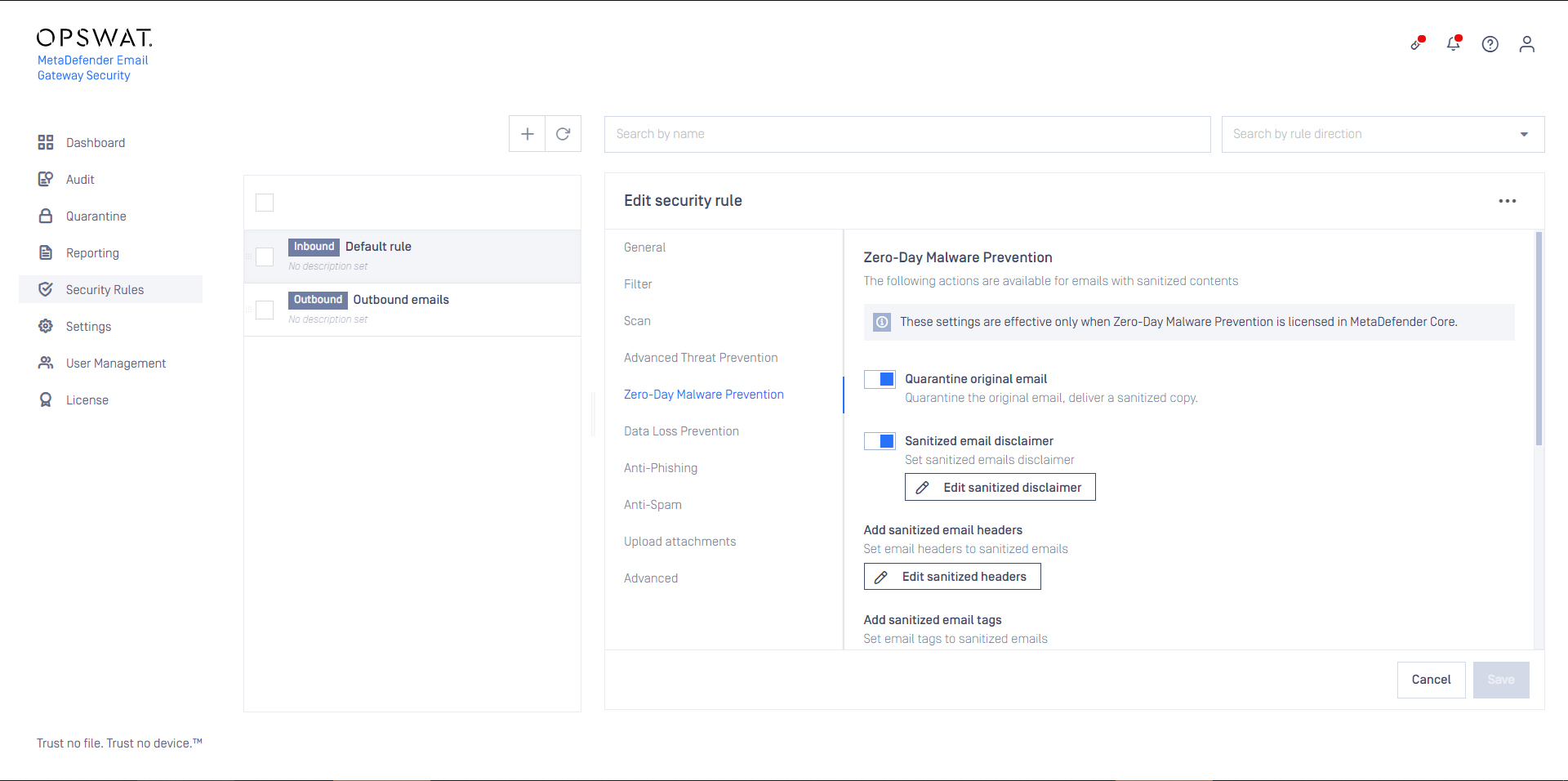
- For an email thats disarm and reconstruction failed under Security Rules /rule/ **Zero-Day Malware Prevention / Zero-Day Malware Prevention / Override sanitization behavior**.
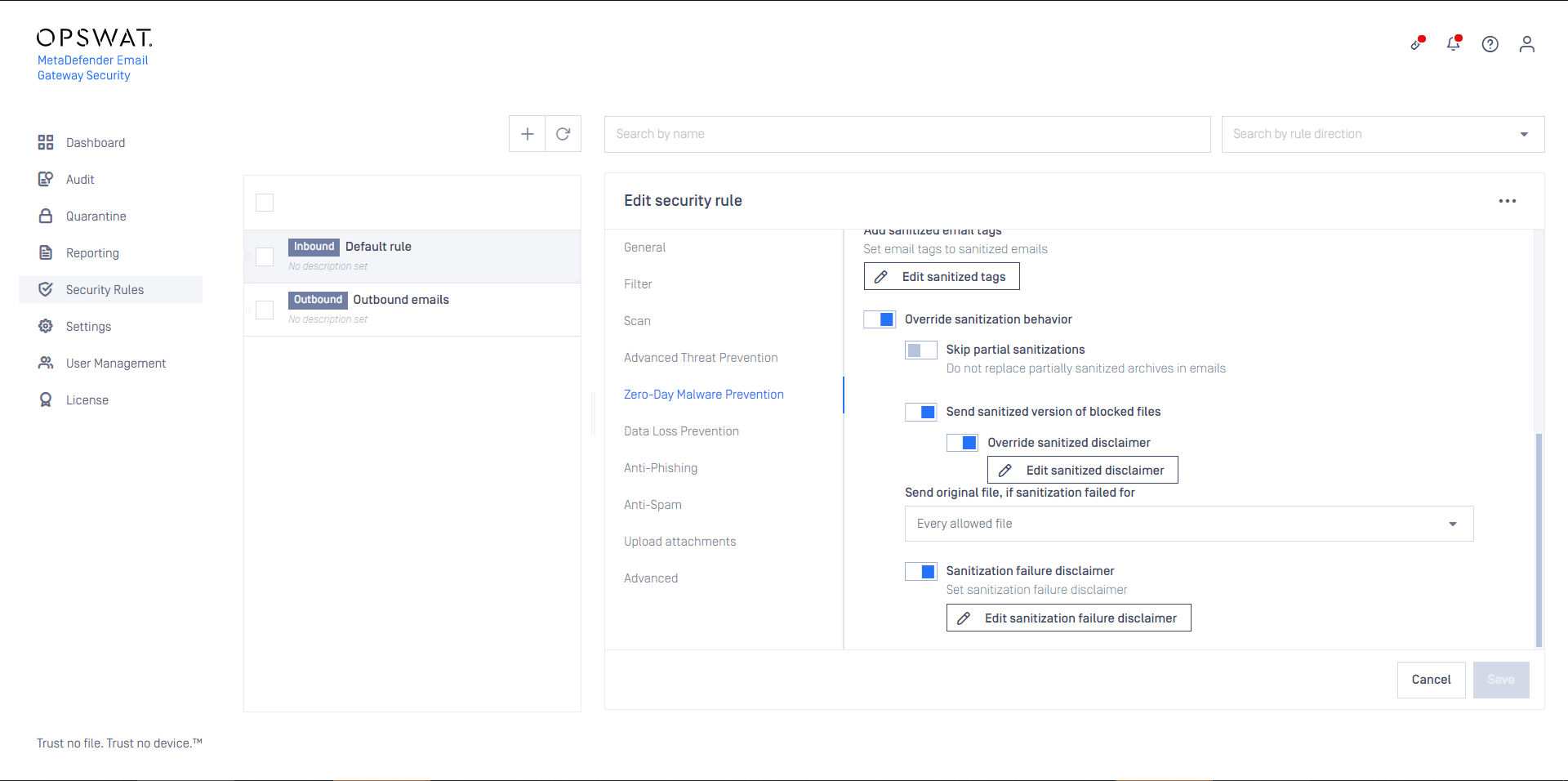
- For an email that has attachments uploaded under Security Rules /rule/ **Upload attachments / Upload attachments / Upload attachments to MetaDefender Managed File Transfer / Attachment notice**.
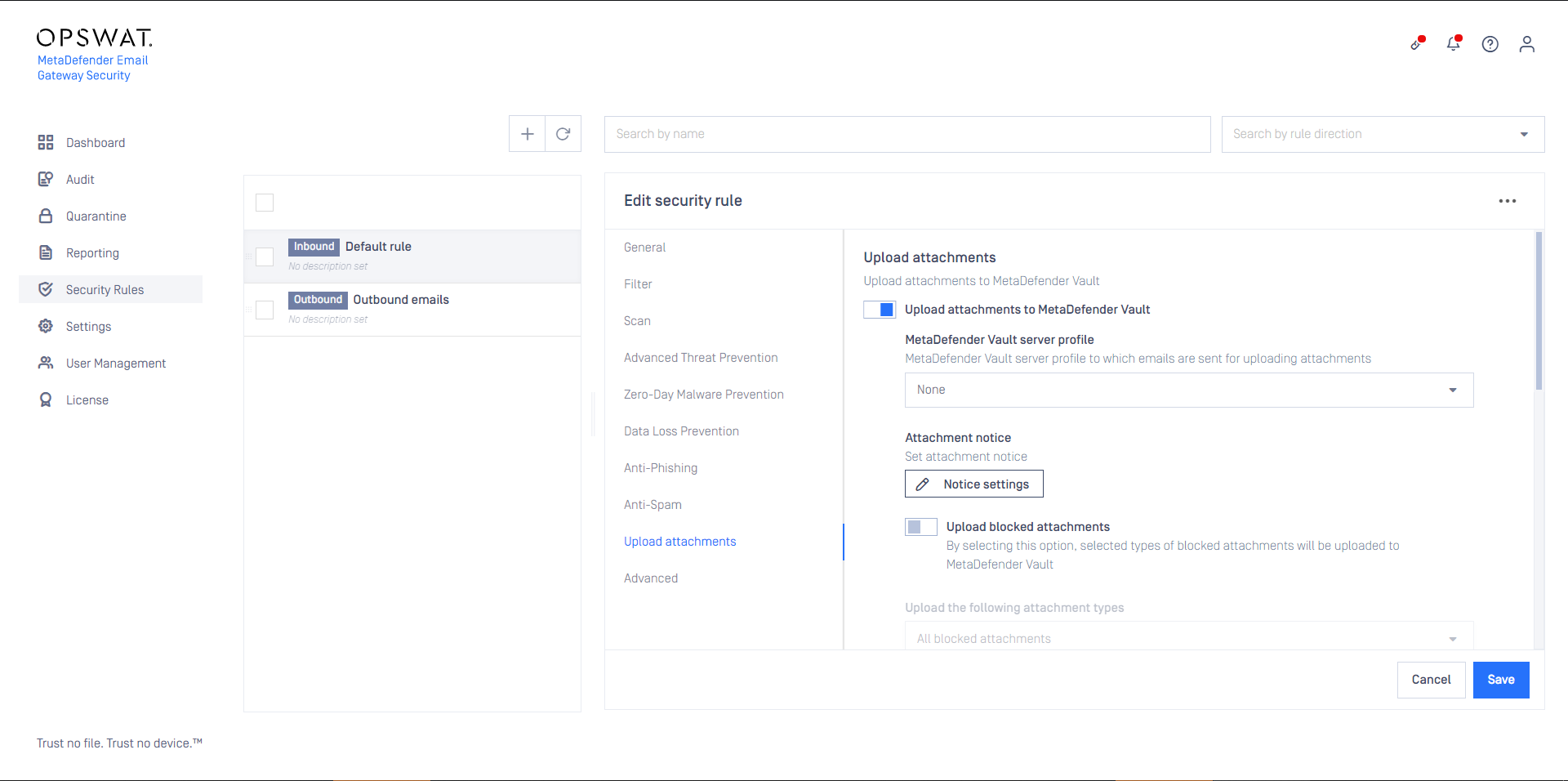
- For an email that was bypassed under Security rules /rule/ Advanced / Override error handling behavior.
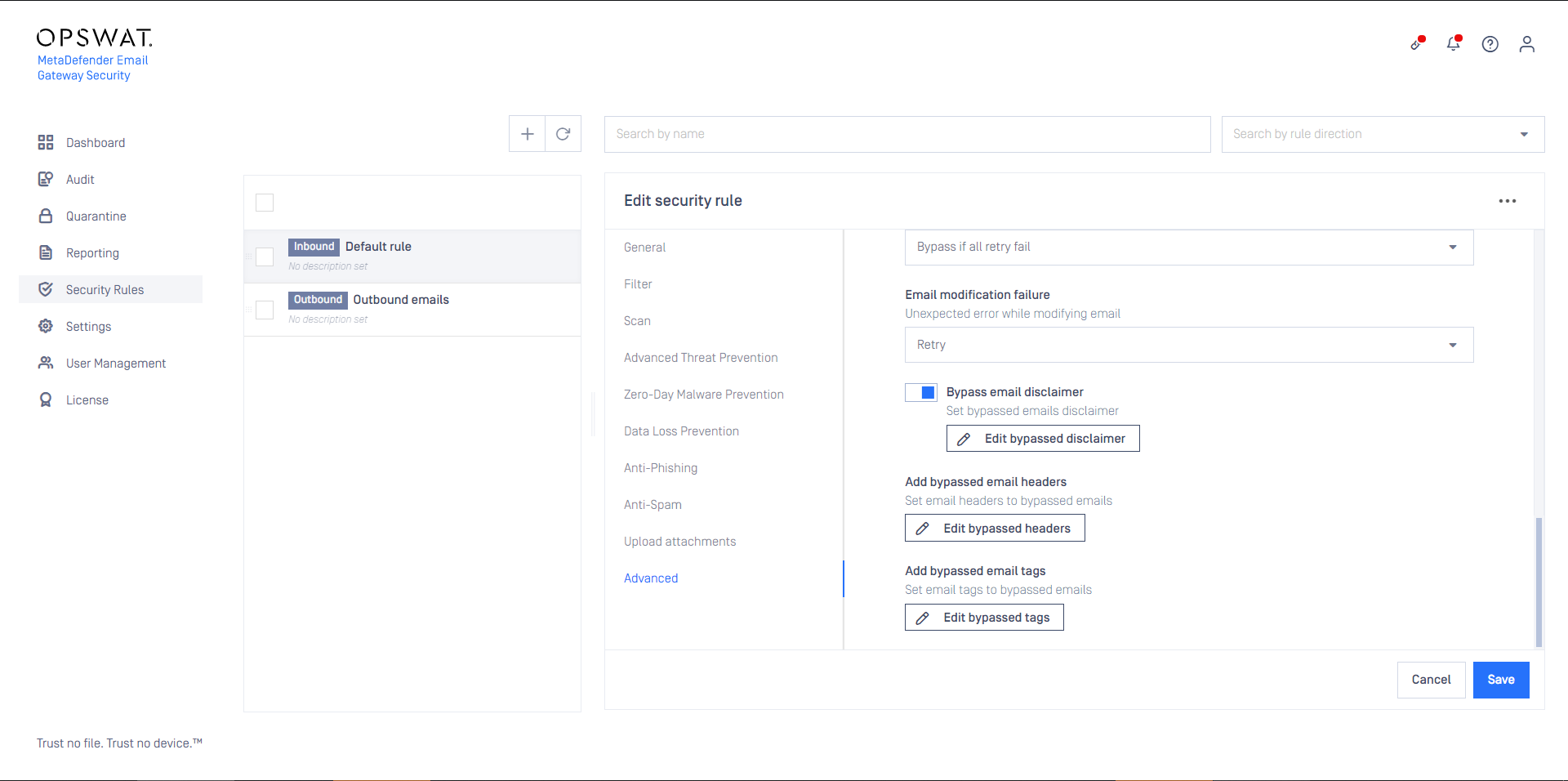
For details see Configuration/Policy.
Grouping
Overview
To have a more compact disclaimer experience, disclaimers can be grouped together so that all disclaimers can be in a single block inside the email.
Disclaimers when not grouped:
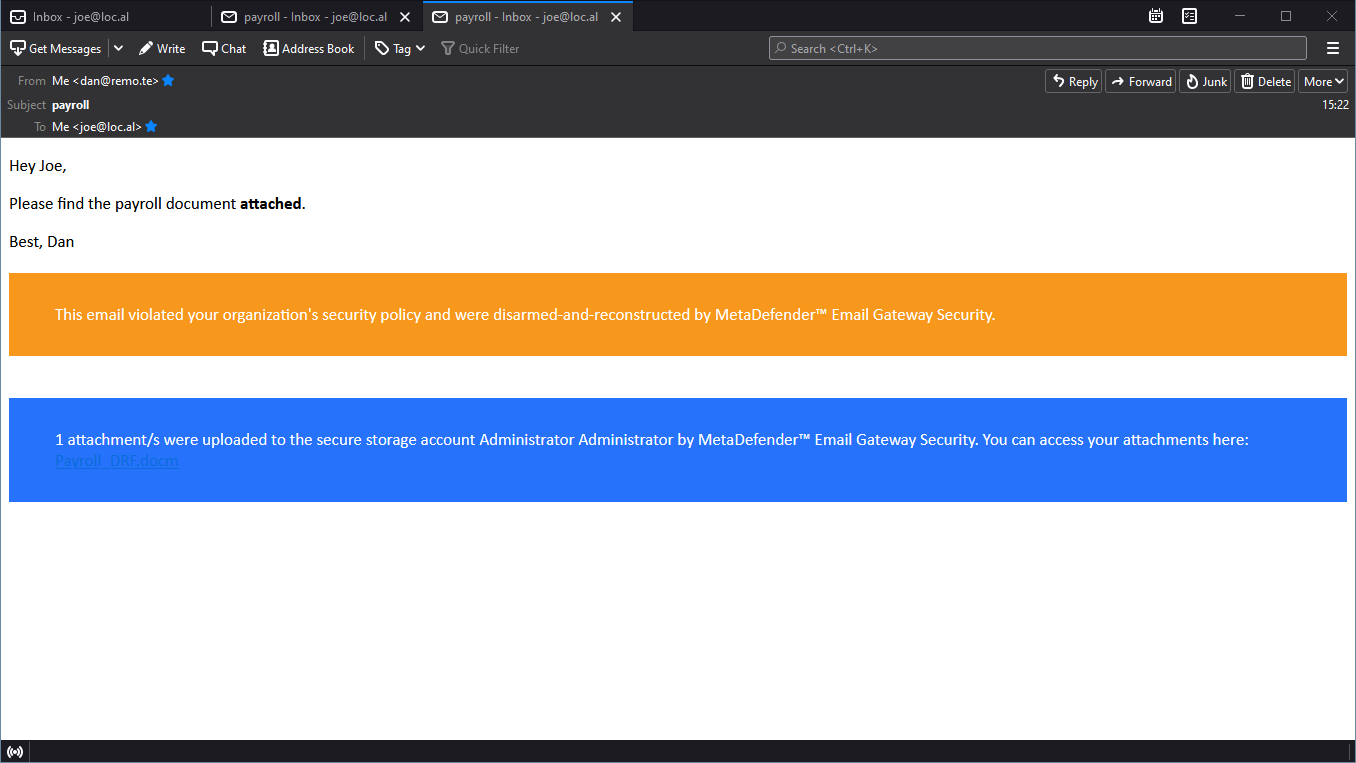
Disclaimers when grouped:
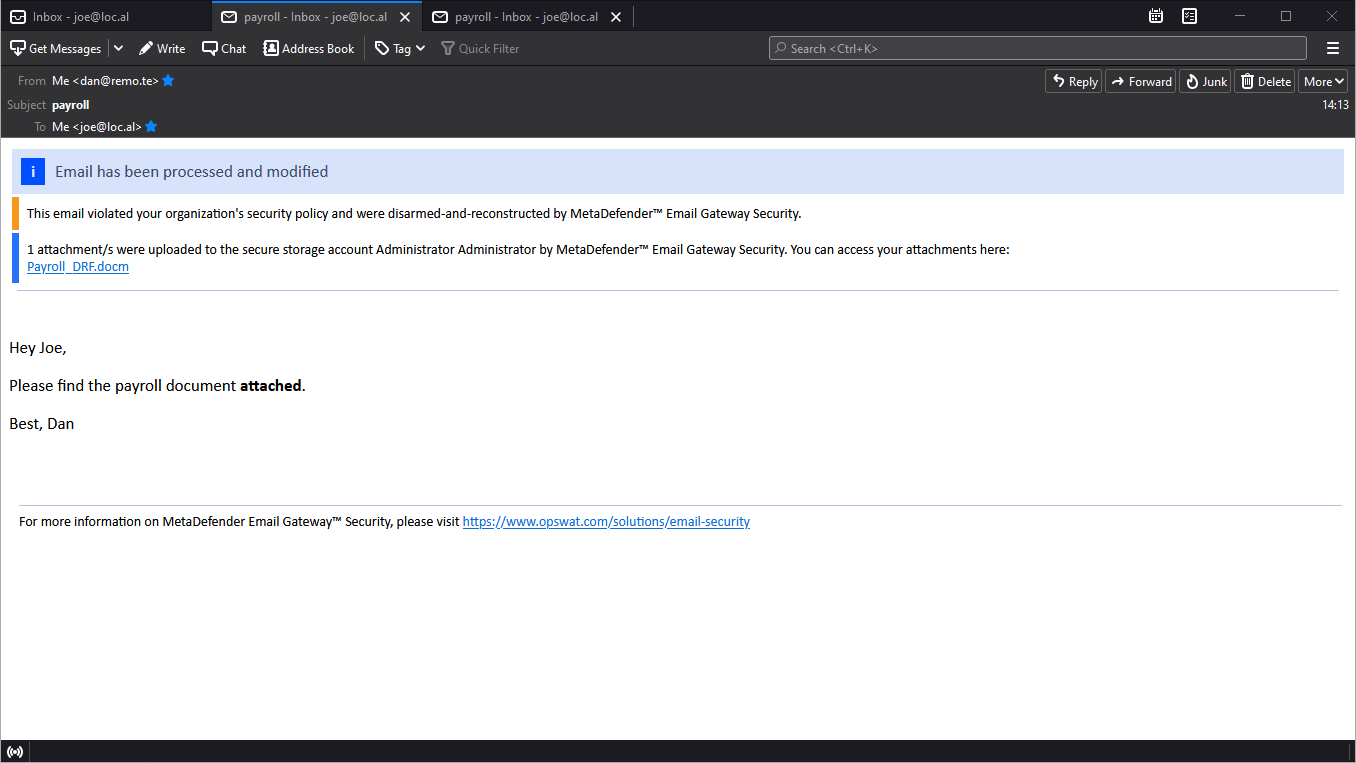
For new installations, disclaimers are grouped by default. This is a change compared to legacy systems (before Email Gateway Security 5.6.0) where disclaimer grouping was not available.
Configuration
Grouping the disclaimers can be enabled for each security rule among the Advanced settings.

The disclaimer block can be configured to be either in the head or in the tail of the email body. When disclaimers are grouped, a footer disclaimer can also be configured to provide details or additional information to the recipient.
The disclaimer block has a banner. The banner is blue when there are no critical style disclaimers in the group, and red, when there are critical style disclaimers.
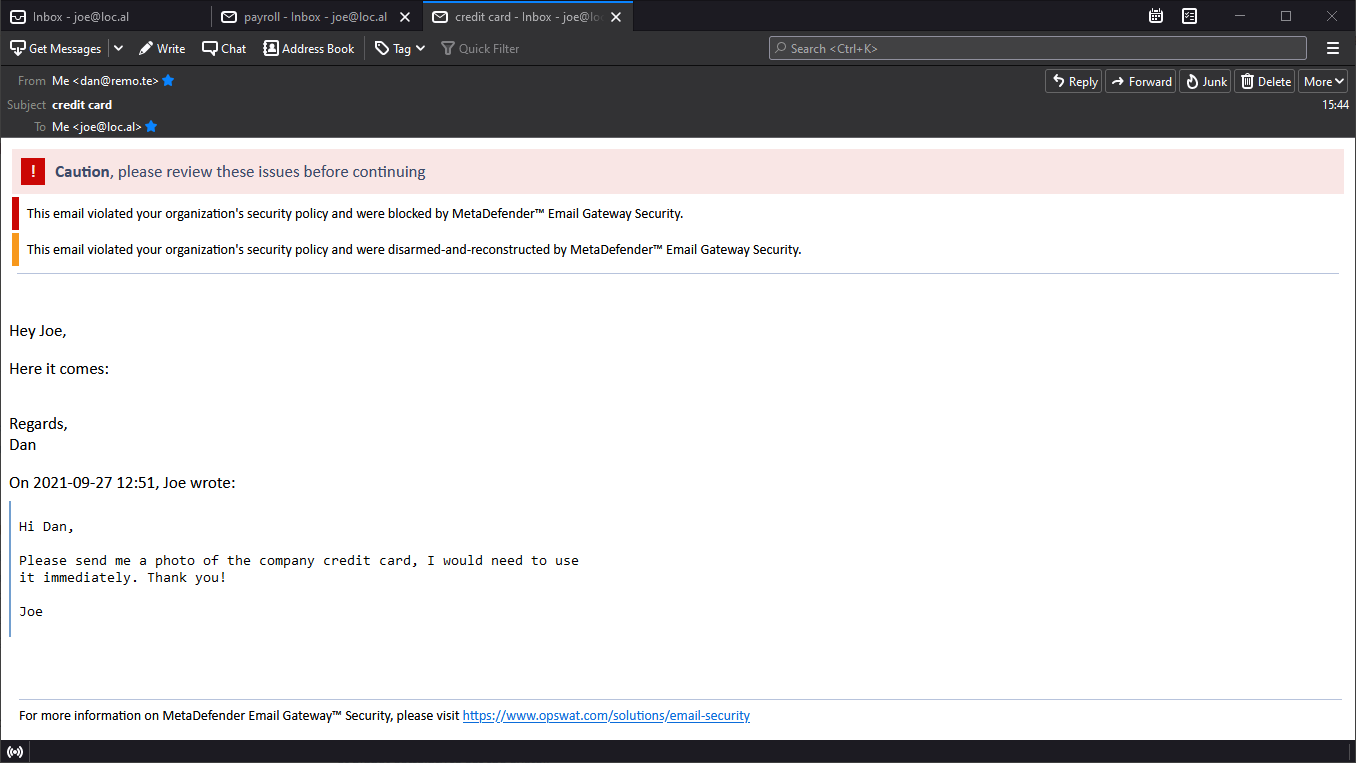
Disclaimer editor
For each disclaimer Email Gateway Security has a what-you-see-is-what-you-get disclaimer with all needed functionality built-in. For example, it has support for text styles, links and lists.
The position of the disclaimer can be set to before or after the contents of the email.
A disclaimer style can be applied to emphasize content to the user (HTML only).
The alignment of the disclaimer can be changed to left or right aligned clicking the
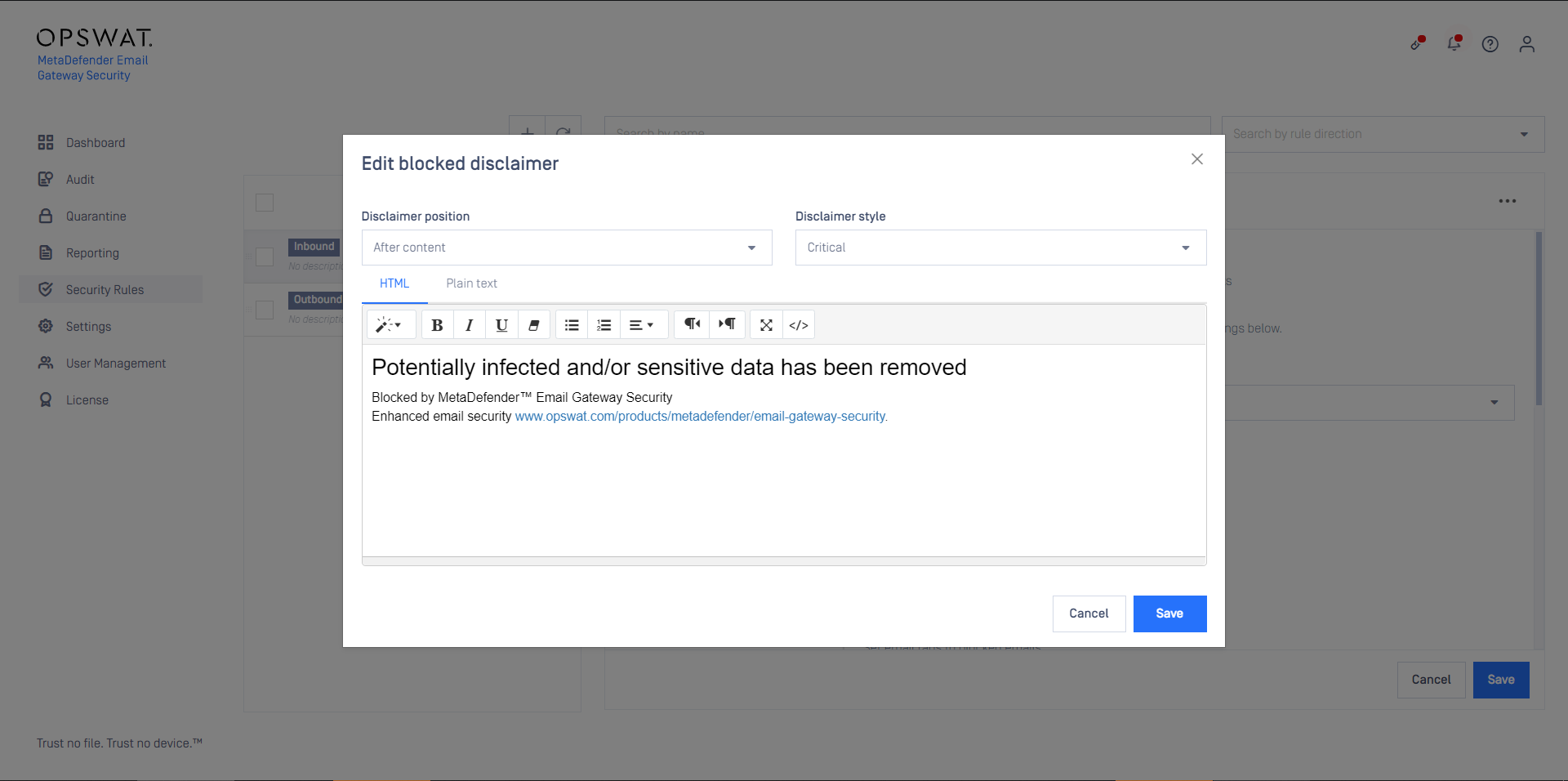
Positions
A disclaimer may be added either
- Before the contents of the original email body (head of the email body) or
- After the contents of the original email body (end of the email body).
Styles
The following built-in styles are supported for disclaimers:
- None: no further formatting of the disclaimer
- Information: the disclaimer is displayed as a blue box (or with a blue bar on the left when grouped)
- Warning: the disclaimer is displayed as a yellow box (or with a yellow bar on the left when grouped)
- Critical: the disclaimer is displayed as a red box (or with a red bar on the left when grouped)
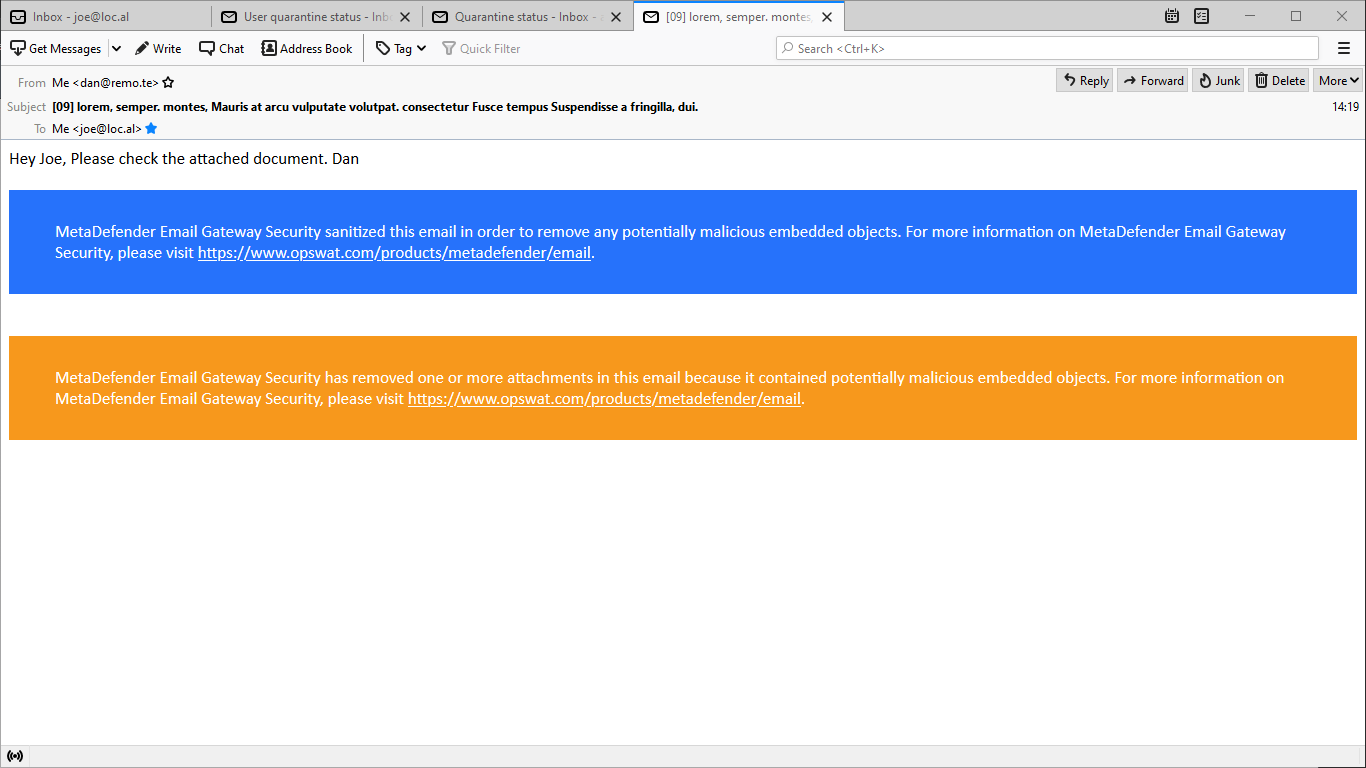
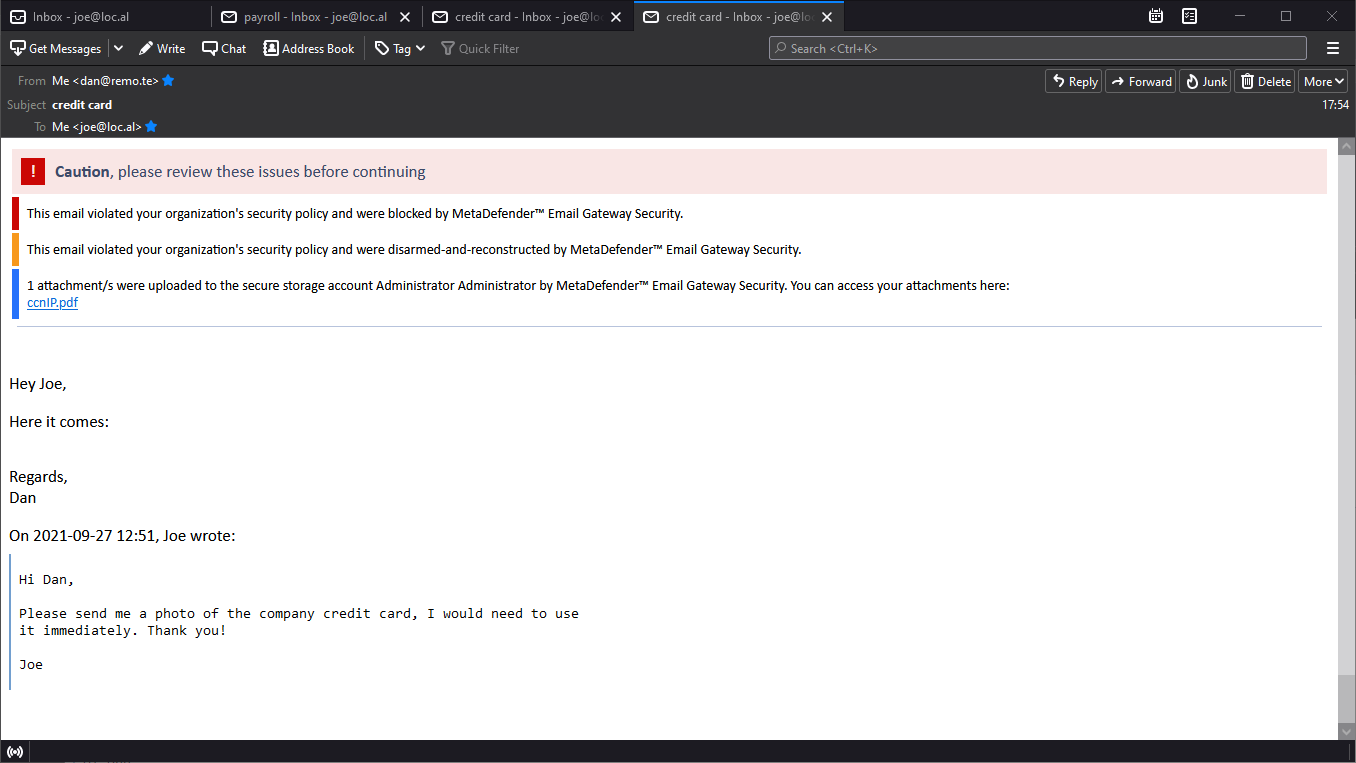
Views
Each disclaimer editor has the following two views:
- HTML: to edit the disclaimer for HTML formatted emails in a what-you-see-is-what-you-get editor,
- PLAIN TEXT: to edit the disclaimer for plain text formatted emails in a text editor.
Disclaimer variables
Variable syntax
The common format of a variable looks like this: %[<prefix>|{s=<suffix>}]<variable_name>[<placeholder>]%
A variable contains three parts:
- prefix: this text will be displayed before the value of the variable if the value is not empty or there is a placeholder defined
- suffix: this text will be displayed following the value of the variable if the value is not empty
- variable_name: the name of the variable
- placeholder: this text will be displayed if the vale of the variable is empty
Examples:
| Variable token | Variable value | Output in disclaimer |
|---|---|---|
| %[]email_subject[]% | Test subject | Test subject |
| %[]email_subject[]% | "" | "" |
| %[Subject: ]email_subject[]% | Test subject | Subject: Test subject |
| %[Subject: ]email_subject[]% | "" | "" |
| %[Subject: ]email_subject[No subject]% | "" | Subject: No subject |
| %[]email_subject[No subject]% | "" | No subject |
| %[]email_subject[No subject]% | Test subject | Test subject |
| %[Subject: {s= (this is the subject)}]email_subject[]% | Test subject | Subject: Test subject (this is the subject) |
Available variables
Generally available variables
The following variables are available for any disclaimer:
email_date
Email message date sent
email_sender
Sender email address
email_recipients
Recipient email address(es) (Comma separated if more than one)
email_subject
Email subject
email_message_id
Email message-id header
email_classifications
Classifications assigned to the email during processing (Comma separated if more than one)
origin_ip
Email last HOP IP address
scan_verdicts
Email scanning verdicts
Attachment related variables
email_attachment_names
Original file name of the email attachments.
Deep CDR or Proactive DLP processing might change the file names of attachments. This variable holds the original attachment file names as a comma separated list.
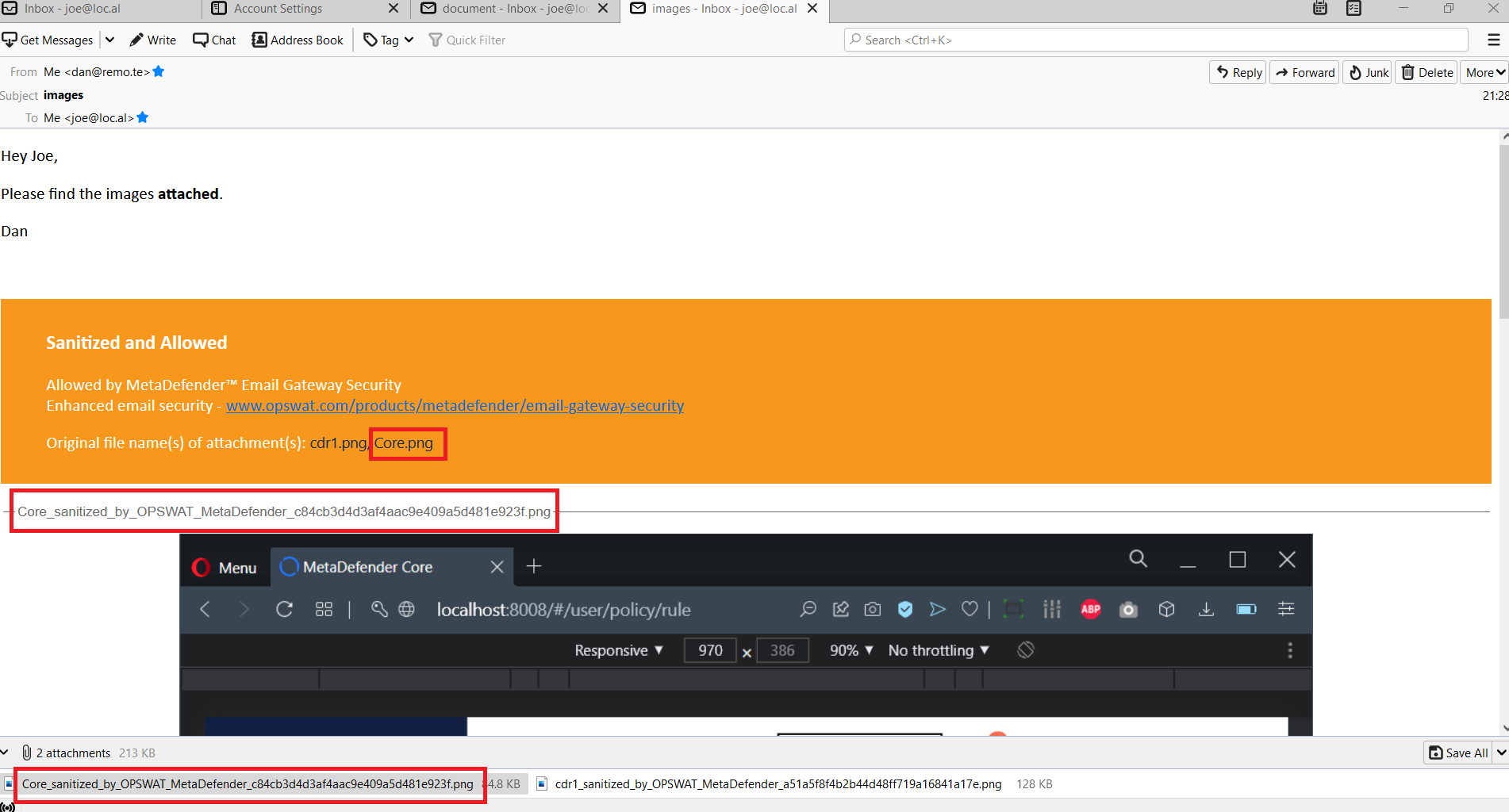
email_attachment_count
Total number of regular (non-inline) attachments in email
email_attachment_password_count
Total number of password protected attachments
email_attachment_uploaded_count
Total number of uploaded attachments
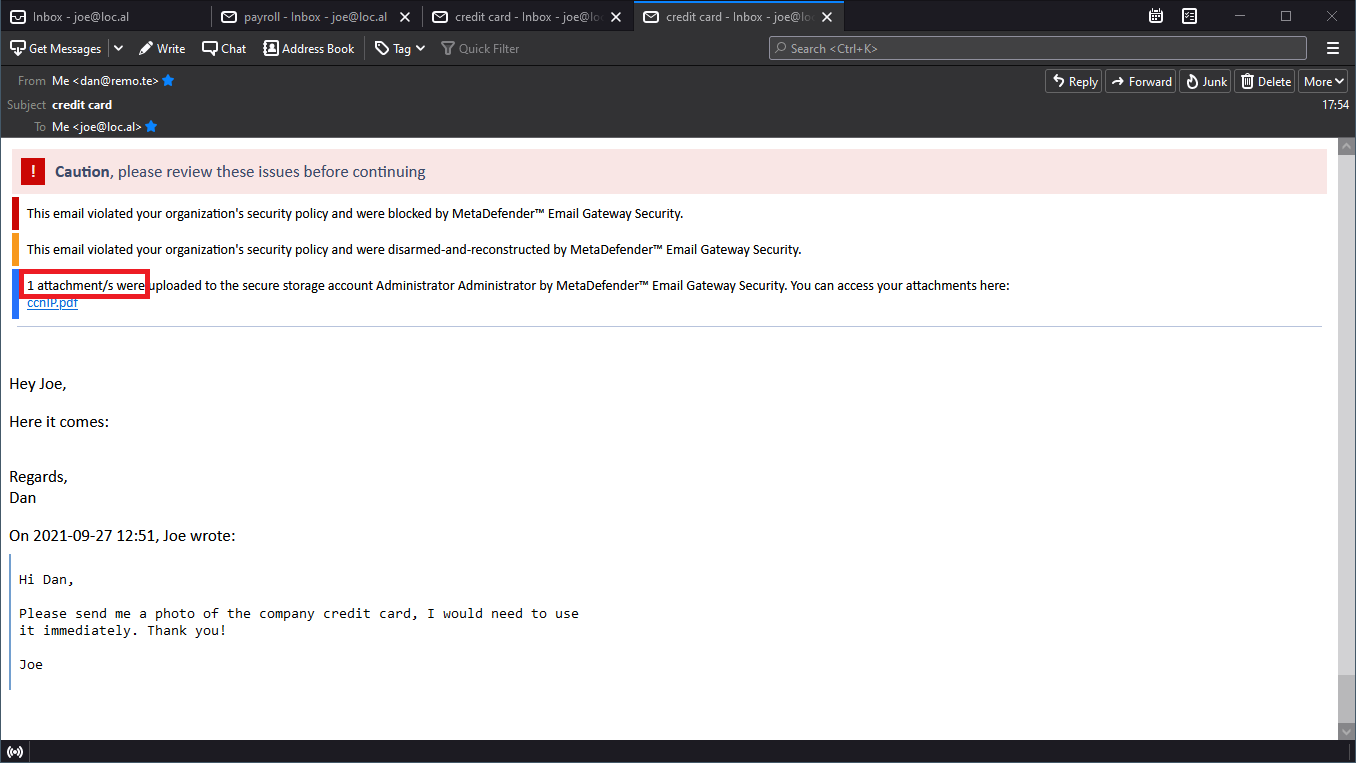
email_attachment_sanitized_count
Total number of sanitized attachments
email_attachment_sanitization_failed_count
Total number of attachments where sanitization failed
email_attachment_sanitization_blocked_count
Total number of sanitized blocked attachments
email_attachment_blocked_count
Total number of blocked attachments
email_attachment_removed_count
Total number of removed attachments
email_blocked_attachments
List of blocked attachment file names
Context specific variables
Emails with encrypted attachments
The following variables are available for disclaimers to emails with encrypted attachments only:
rescan_link_url
Replaced by the Settings > General / Configuration / Public server name (see Configuration/Settings). If the Public server name is not set then the "Your administrator did not set a public server address for rescan" text will be displayed instead.
rescan_link_expiry
Replaced by the Settings > General / Configuration / Rescan link availability value.
rescan_link_expiry_time
Replaced by the date and time value calculated using the Settings > General / Configuration / Rescan link availability value. Calculation method The date and time value is calculated as: (Time of email arrival to Email Gateway Security) + (Settings > General / Configuration / Rescan link availability) UTC or server local time The value of Settings > General / Configuration / Use the server's local timezone affects the format of this value.
Examples: Date format with server local timezone enabled: 2021-09-26 10:39:49 (UTC+02:00) Date format with server local timezone disabled: 2021-09-26 08:39:49 UTC
Sanitized emails
The following variables are available for emails that have sanitized contents:
hyperlinks
This variable applies when an email got processed by Deep CDR, and disclaimers are enabled for emails with sanitized contents.
The Deep CDR engine in MetaDefender Core (under Inventory > Modules / Deep CDR / Settings / HTML CONFIGURATION / PROCESS HYPERLINK BEHAVIOR) can be configured to return the list of hyperlinks in the processed file.
sanitization_details
This variable provides details of the sanitization operations applied to the email in the following format:
[email subject]/[filename]: object [action], object [action] etc.
Emails with attachments uploaded to MetaDefender Managed File Transfer
The following variables are available only for disclaimers to emails with attachments uploaded to MetaDefender Managed File Transfer:
mft_name
First name and last name of the MFT account to which the attachments were uploaded to.
mft_email
Email address of the account on MFT to which the attachments were uploaded to.
mft_user
The user name of the MFT account to which the attachments were uploaded to.
mft_list
List of each attachments uploaded to MFT.
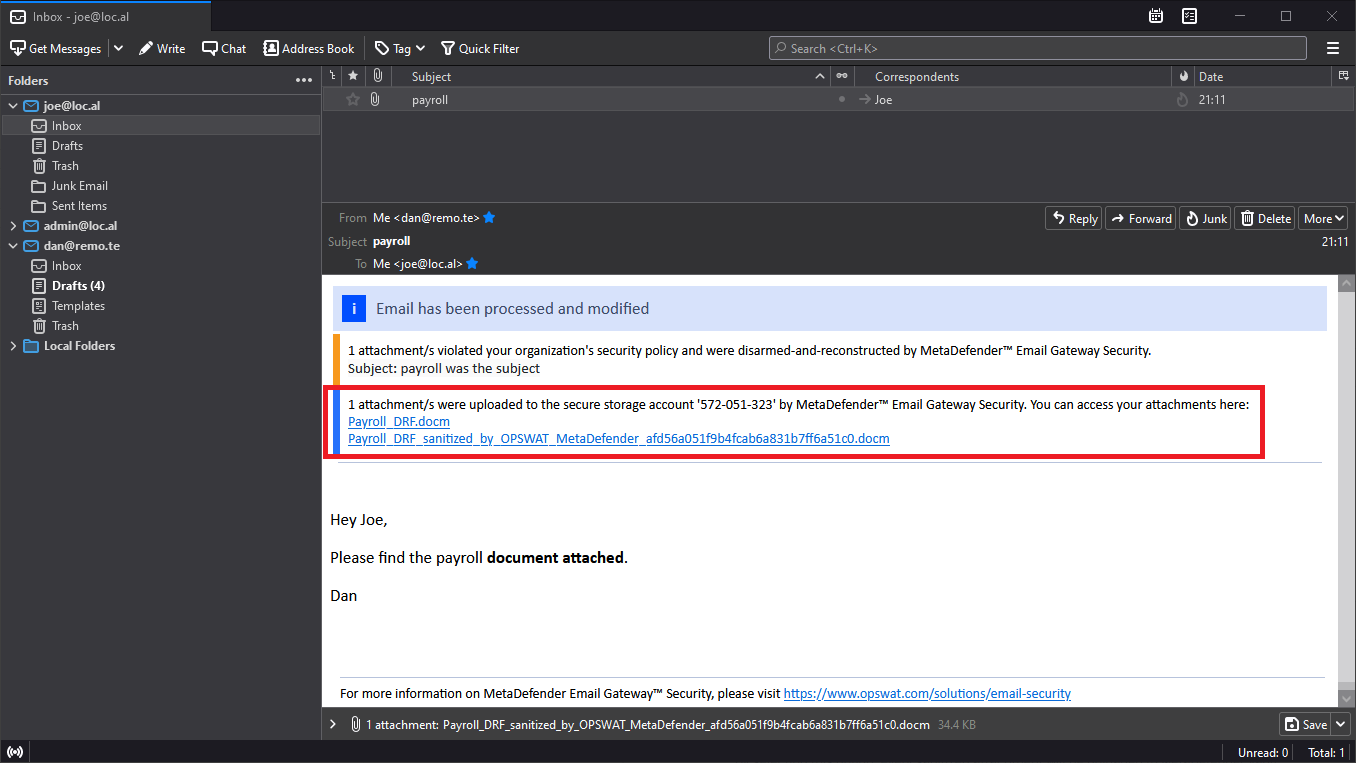
mft_url
A link to the root folder on MetaDefender Managed File Transfer to where all the attachments were uploaded to. This variable may be used as an alternative to mft_list to avoid a long list of files.
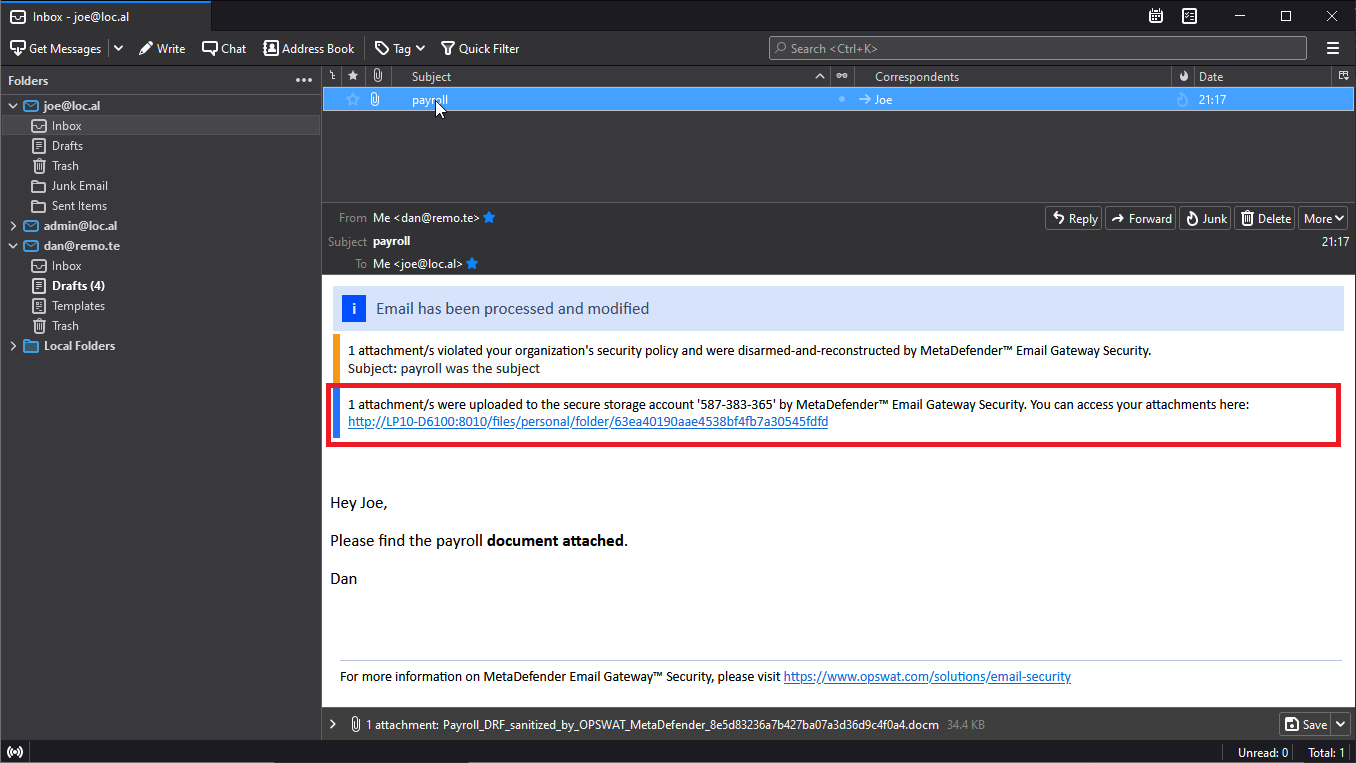
The value of this variable won't produce a link (as mft_list will), so this variable may be specified as a href of an <a> (anchor) tag in the raw HTML view of the disclaimer editor.
Example disclaimer with variables
Here is an example disclaimer for blocked contents:
And an example result after sending an infected attachment:

